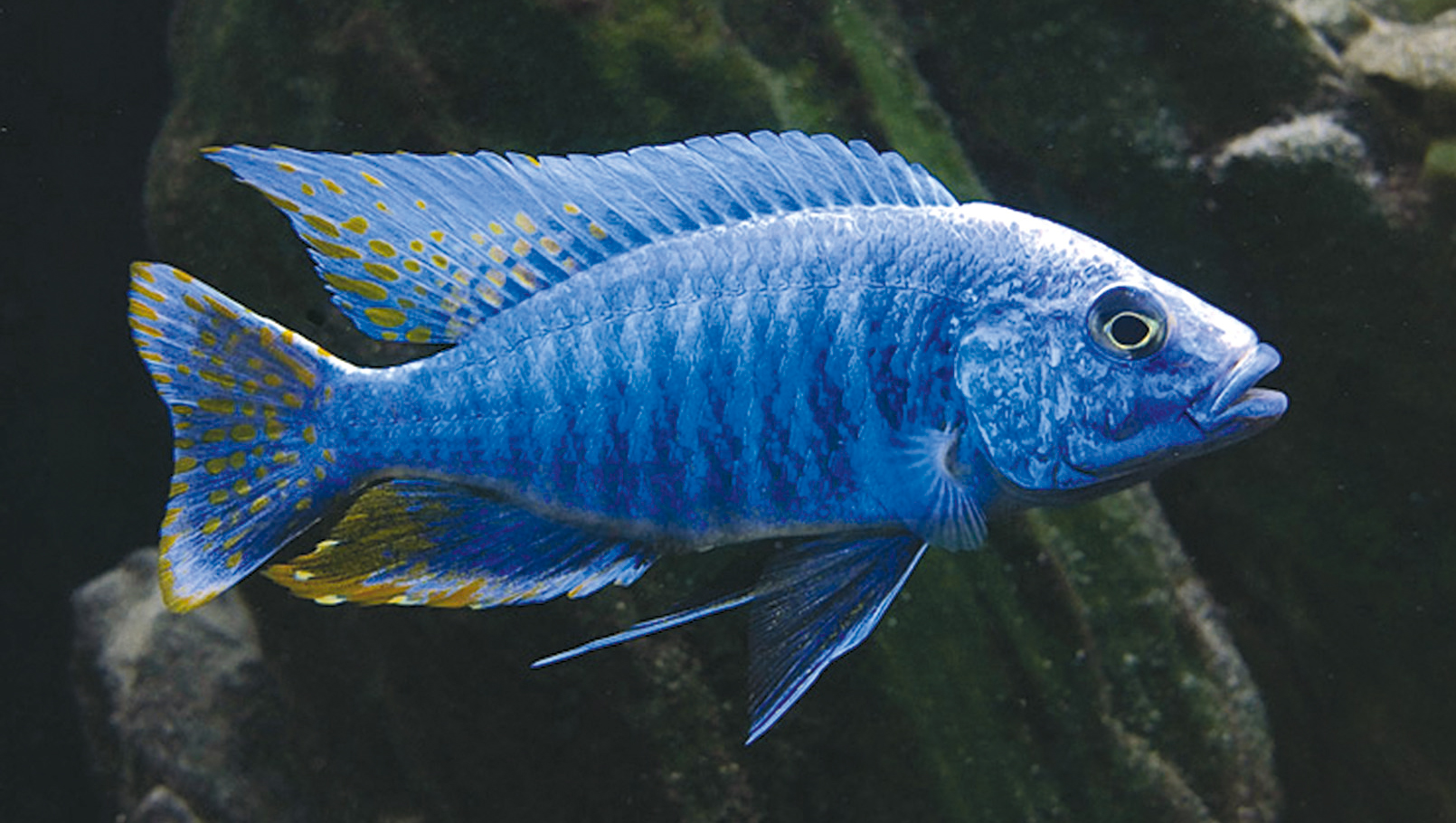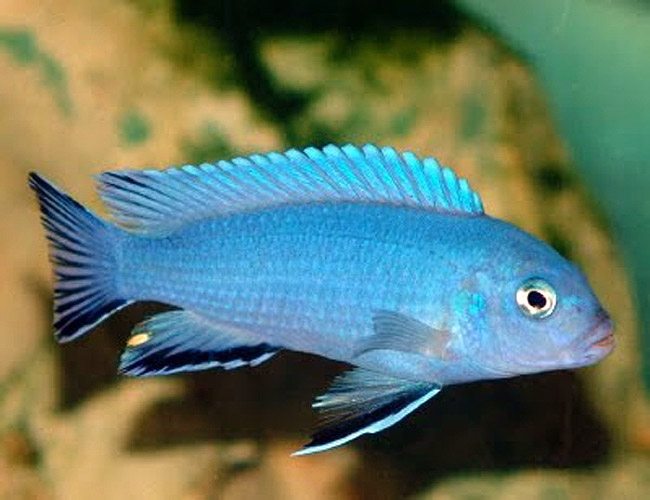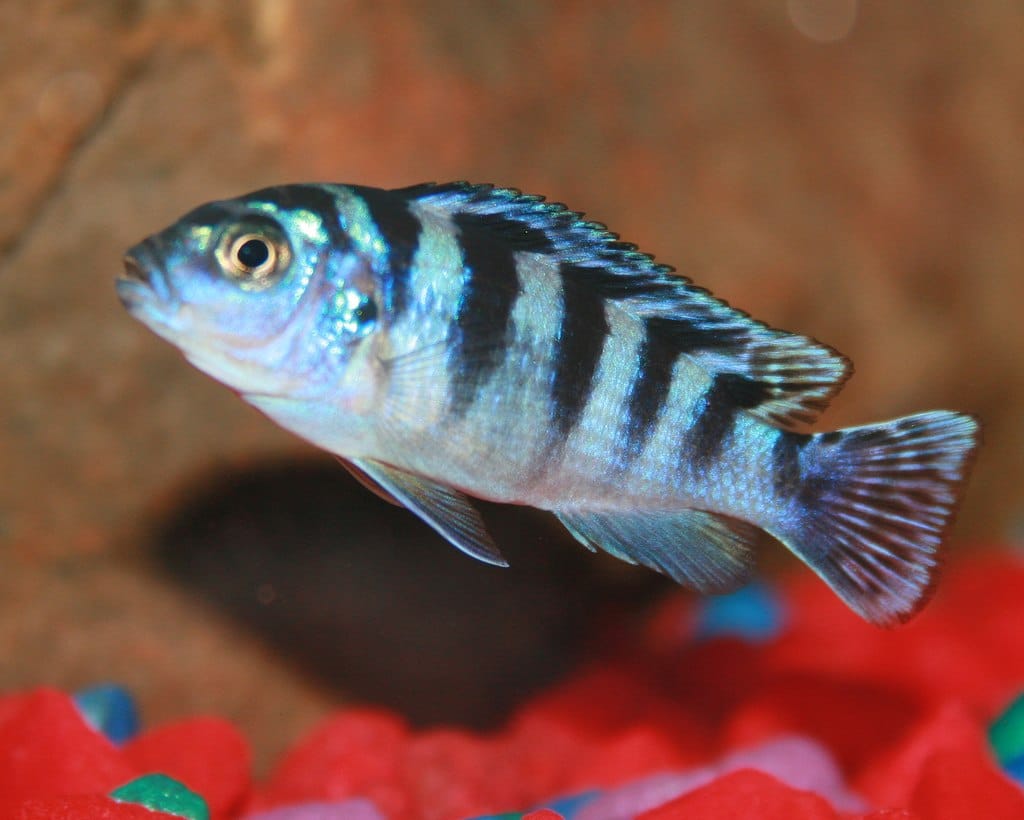
Auratus Azul (Melanochromis Cyaneorhabdos) MyAquarium
African Cichlids are species of freshwater fish that belong to the Cichlid family, and they are native to rivers and lakes of Africa. This is a diverse group of fish that are comprised of fish with many different sizes and coloration. While many popular species are available at an affordable price, they can be territorial and aggressive fish.

ELECTRIC BLUE African Cichlid I have this one. He is so cool! Love the blue colour in him
These colorful and often aggressive fish are native to Africa's many freshwater lakes, rivers, and streams. There are over 1300 scientifically-described types of African cichlids today, and new ones are being discovered all the time.

African Cichlids Digital
December 20, 2023 Dive into the world of Blue African Cichlids and explore their habitat, behavior, and tank requirements. Discover their physical characteristics, feeding habits, and common health issues. Habitat and Distribution Lake Malawi, also known as Lake Nyasa, is a vast freshwater lake located in the Eastern Rift Valley in Africa.

African Cichlid Blue Moorii African Cichlids For Sale The iFISH Store
The Blue Hap, Red Empress, and Tangerine Tiger are 3 well-known examples. Peacocks: Peacock Cichlids come from the Aulonocara genus. They are among the most brightly colored fish in the family and can come in up to 4 colors at once. OB Peacocks are hybrids between 2 different species.

Cobalt Blue Cichlid Cichlid aquarium, African cichlids, Cichlids
Johanni Cichlid (Pseudotropheus johannii): Ultimate Care Guide. The Johanni Cichlid, also known as Bluegray Mbuna Cichlid or Electric Blue Johanni, is a stunning member of the Mbuna family of African Cichlids. Endemic to Lake Malawi, this species has yellow-orange coloration when juvenile. On maturity, males take on the brilliant sky to dark.

Blue African Cichlids hzwsdxgfs2
The Blue Dolphin Cichlid is a non-aggressive fish and can be kept with other small and non-aggressive African cichlids. In a large aquarium, the Blue Dolphin will form schools and it's recommended to keep more females than males. By doing this, it causes less stress when the male wants to spawn. Breeding the Blue Dolphin Cichlid

Powder Blue African Cichlid Arizona Aquatic Gardens
The Electric Blue Hap is known for its stunning blue coloration and is a striking addition to any aquarium. When creating a suitable tank environment, be mindful of these essential requirements: Temperament: Semi-aggressive Diet: Carnivorous Tank Size: 75 gallons minimum (284 liters) Care Level: Moderate Lifespan: 6 to 10 years

African Cichlids 15 Popular Species & How to Care for Them
Overview The Electric Blue African Cichlid creates a gorgeous, colorful focal point in the freshwater aquarium. It has the typical sleek, bullet-shaped body common to the Cichlidae family. The active Electric Blue African Cichlid seems equally content guarding its territory or perusing the perimeter of your aquarium.

13 Different Types of African Cichlids (With Pictures)
Blue Neons are are maternal mouth brooders. The female cichlid will lay her eggs (usually a clutch of 10-15) on a sub-vertical surface (mainly a rock or a cave wall) the male will be in position to fertilize them. The female will gather the eggs into her mouth until the fry are ready to be released (3-4 weeks).

Electric blue African Cichlid YouTube
Origin The blue cichlid (Aulonocara nyassae) is from the Cichlidae family of fish. Blue cichlids evolved from the great lakes in Africa with origins dating back to around 12,400 years ago. Blue cichlids are native to Lake Malawi in East Africa. In the wild, the fish swim at depths of 82 feet (25 meters) around rocky coasts.

Electric Blue Ahli African Cichlid YouTube
There are several types of African cichlids to choose from, including peacock cichlids, red zebra cichlids, bumblebee cichlids, blue cichlids, and kribensis cichlids. Although African cichlids look beautiful, the fish are aggressive and territorial, and some species of African cichlids aren't suitable for beginner fishkeepers. TABLE OF CONTENTS

Sciaenochromis fryeri (Maleri Is.) Electric Blue Ahli Cichlid Electric Blue Ahli Cichlid
Updated: November 29, 2022 110.9K views African cichlids are a larger species of freshwater fish that originate in Africa, Asia, and South America. These fish tend to be a popular pet among aquarists, due to the large range of colors that you can keep, even if you don't have a saltwater tank.

Electric Blue African Cichlid Tropical Fish for Freshwater Aquariums
The blue johanni cichlid (scientific name: Pseudotropheus johannii) is a freshwater fish that's native to the East African Rift Valley. They are most commonly found in the southern part of Lake Malawi, specifically around the Nkhotakota Wildlife Reserve. This cichlid prefers to live in areas with a lot of rocks and caves.

Melanochromis cyaneorhabdos "electric blue johanni" medium
Max Size of fish: 4 1/2 inches. Temperature range: 72-86 degrees Fahrenheit. pH range: 6-7.5. The Botia Loach is known to be a semi-aggressive fish so it should be able to hold its own with the African Cichlid. It's typically tan and black and has four barbells that can be seen protruding from its mouth.

Blue Neon Cichlids, Cichlid aquarium, African cichlids
Electric Blue Cichlids (Sciaenochromis fryeri), also known as Electric Blue Hap, is a type of African Cichlid that is native to Lake Malawi. Skip to content Freshwater FishMenu Toggle Cichlids Rasboras Catfish Plecos Tetras Loaches Arowanas Betta Fish Gouramis Saltwater Fish Aquarium Plants Aquarium JournalMenu Toggle Aquarium Light Aquarium Heater

African Cichlid Cobalt Blue Zebra Aquarium Cichlid Fish For Sale The iFISH Store
Blue Zebra Cichlids are a popular species so you will likely find some in any pet stores selling cichlids. They will cost in the range of $10-$20. Always check for signs of disease before buying individuals though. In a healthy tank, each fish could survive for up to 10 years. Typical Behavior Aggression is very common among these fish.